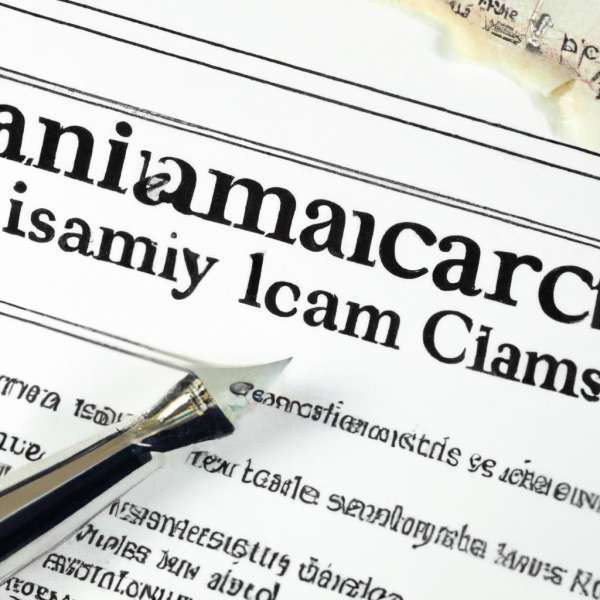Mastering the Complexities: Managing Parking Lot Accident Cases
Parking lots, often overlooked as mere extensions of our daily commutes, can quickly become hotspots for unexpected incidents and disputes. Every day, numerous vehicles navigate these often-crowded areas, where the potential for accidents is ever-present. Whether it’s a minor scrape or a more severe collision, the aftermath of a parking lot accident can leave drivers feeling bewildered and anxious. Grasping the intricacies of these situations is essential for anyone involved. This article provides a comprehensive guide on how to adeptly handle parking lot accident cases—from determining fault to managing insurance claims. With the right knowledge and a strategic approach, you can navigate the often-overlooked complexities of these incidents, ensuring you are well-prepared to handle any situation that arises.

Determining Responsibility in Parking Lot Accidents
Parking lot accidents frequently lead to confusion about who is at fault. Unlike typical road accidents, liability in a parking lot can depend on various factors. Understanding these elements can help you manage the aftermath of an incident more effectively.
One of the initial considerations is the **type of accident** that occurred. Common scenarios include:
- Reversing collisions: Often involve a driver backing out of a parking space and hitting another vehicle or pedestrian.
- Fixed object collisions: Such as striking a light post or a shopping cart return unit.
- Multiple vehicle collisions: Situations where two or more cars are involved in minor fender benders while navigating the lot.
Determining liability often hinges on the actions of the drivers involved. Factors such as **negligence**, **speed**, and **situational awareness** play significant roles in fault assessments. To clarify responsibilities, consider the following:
| Factor | Description |
|---|---|
| Driver Behavior | Was the driver distracted, in a hurry, or violating traffic rules within the parking lot? |
| Parking Lot Signs | Were there clear signs indicating the flow of traffic or parking regulations? |
| Witness Accounts | Were there any witnesses who can corroborate the events leading up to the accident? |
Ultimately, thoroughly documenting the scene, including photos of the accident, vehicle positions, and any visible damages, is crucial. This information will significantly aid in establishing liability when it comes to insurance claims or legal proceedings. Understanding these elements can simplify a seemingly complex situation, offering clarity during a challenging time.

Collecting Crucial Evidence for Your Case
When dealing with a parking lot accident case, gathering robust evidence is vital to building a strong foundation for your claim. The clarity of the circumstances surrounding the incident often depends on the quality and type of evidence collected. Here are some key elements to prioritize:
- Photographs: Take detailed images of the accident scene, vehicle positions, any damage incurred, and surrounding signage or markers that could provide context.
- Witness Statements: Record contact information from any bystanders and obtain their statements regarding what they observed during the accident.
- Incident Reports: If law enforcement was involved, request a copy of the police report, as it may contain crucial information about the incident.
- Traffic Cameras: Check for surveillance cameras nearby that may have recorded the incident, and know how to request that footage legally.
Documentation plays a vital role in reinforcing your case. Organizing all collected evidence systematically can greatly enhance your ability to present your argument effectively. Create a timeline of events that details each step leading up to the accident, including:
| Event | Time | Details |
|---|---|---|
| Arrival at Parking Area | 2:00 PM | Parked in an assigned spot. |
| Accident Occurrence | 2:10 PM | While reversing, another vehicle collided. |
| Witness Engagement | 2:12 PM | Witness offered to provide their perspective on the incident. |
Each piece of information can help construct the sequence of events leading to your accident, aiding in establishing fault and bolstering your case. Additionally, ensure you retain copies of any medical records, repair estimates, and receipts for expenses incurred due to the accident. This thorough documentation not only strengthens your case but also empowers you to advocate for your rights more effectively in discussions with insurance companies.

Navigating Insurance Claims and Settlements
Following a parking lot accident, one of the most crucial steps is managing the often intricate process of insurance claims and settlements. **Understanding your coverage**, as well as that of the other party, can significantly influence the outcome of your claim. Ensure you gather all necessary documentation related to the incident, which typically includes:
- Accident reports filed with the police
- Photos of the damage and the accident scene
- Witness statements or contact information
- Your insurance policy details
Once you have compiled this information, it’s essential to contact your insurance provider promptly. They can guide you through the initial steps of filing a claim. Be prepared to provide them with the documentation you’ve gathered, as they will need it to assess liability and damage costs. Consider the **following points** when discussing your case with them:
- Was the accident due to negligence on either party’s part?
- What are the estimated repair costs for both vehicles?
- Are there any medical expenses or lost wages to consider?
The negotiation phase can be particularly challenging. If the other party’s insurer makes an initial settlement offer, it might be lower than what you believe is justified. Engage in **careful negotiation**, using the evidence collected to support your counteroffer. Understanding the average settlement amounts for similar cases can also provide leverage. The table below outlines common factors that influence settlement amounts:
| Factor | Average Settlement Impact |
|---|---|
| Severity of Injuries | Higher settlements |
| Property Damage | Moderate to high settlements |
| Duration of Medical Treatment | Increases settlement |
| Insurance Policies | Affects maximum payout |
Ultimately, if negotiations reach an impasse or if liability is disputed, you may need to consider legal options. Consult with an attorney specializing in auto accidents to explore your options, including litigation or mediation. By staying informed and organized, you can effectively navigate the insurance landscape surrounding your parking lot accident, ensuring your rights are upheld and your losses are adequately compensated.

Seeking Legal Support for Complex Cases
When dealing with the aftermath of a parking lot accident, it’s crucial to understand the complex nature of these cases. Unlike typical vehicular collisions on main roads, parking lot incidents often involve multiple factors, such as shared liability, unclear traffic laws, and varying levels of property damage. Securing legal assistance during these difficult times can greatly impact the success of your claim.
Understanding the Intricacies: Incidents in parking areas can involve multiple parties, such as:
- Other motorists
- Pedestrians
- Property owners
- Surveillance footage
- Insurance policies
Each of these factors adds layers of complexity that can make determining liability challenging. Competent legal support can help clarify these aspects, ensuring all relevant factors are considered in seeking fair compensation.
Collecting Evidence: A skilled attorney will help you gather crucial evidence, including:
- Accident reports
- Witness testimonies
- Physical evidence from the scene
This comprehensive documentation is vital as it can support your claims and clarify the sequence of events leading to the accident. Additionally, an experienced lawyer will handle insurance negotiations, giving you the best chance of obtaining the highest possible settlement.
Possible Obstacles: You may face several challenges, such as:
| Obstacle | Explanation |
|---|---|
| Shared Fault | Determining the percentage of fault can reduce your compensation. |
| Insurance Disputes | Insurers may challenge claims, leading to prolonged negotiations. |
| Medical Documentation | Proving injuries requires thorough medical records. |
With professional assistance, you can navigate these obstacles more easily, allowing you to focus on recovery rather than the legal complexities of your case.
Final Thoughts and Takeaways
Dealing with the aftermath of a parking lot accident can be a complicated and emotional process. By understanding your rights, gathering necessary evidence, and effectively communicating with insurance companies, you can take significant steps toward achieving a fair resolution. Remember, being proactive and well-informed is crucial to protecting yourself and your interests in these often-overlooked situations. Whether it’s exchanging information, documenting the scene, or seeking legal advice, each action contributes to a clearer path forward. As you move past the stress of the incident, keep this knowledge in your toolkit; it may be the key to turning a frustrating situation into a manageable one, guiding you toward closure and peace of mind. Ultimately, with the right approach, you can transform a challenging circumstance into a manageable experience, leading you toward resolution and tranquility.
Mastering the Art of Navigating Parking Lot Accident Claims
Understanding Parking Lot Accidents
Parking lot accidents are surprisingly common and can be just as stressful as other types of accidents. Given the tight spaces and constant motion, understanding how to navigate parking lot accident claims effectively is essential.
Common Causes of Parking Lot Accidents
- Distracted driving
- Poor visibility
- Improper backing up
- Speeding
- Confusing parking lot design
Steps to Take After a Parking Lot Accident
Knowing the immediate steps to take after a parking lot accident can significantly impact your claim. Here’s a step-by-step guide:
-
Ensure Safety: Check for injuries and ensure everyone’s safety. Move away from traffic if possible.
-
Gather Information: Exchange contact, insurance, and vehicle information with the other driver.
-
Document the Scene: Take photographs of the scene, including damage to all vehicles, license plates, and any relevant signage.
-
File a Police Report: If there’s significant damage or any injuries, call the police to file a report. This can be crucial for your claim.
-
Notify Your Insurance Company: Inform your insurance company about the accident as soon as possible.
Reporting the Accident
Reporting the accident promptly is essential for a smooth claims process. Be prepared to provide a detailed account of what happened, supported by photos and witness statements if available.
Understanding Insurance Coverage
Different types of insurance coverage may come into play in a parking lot accident claim.
Liability Coverage
If you’re at fault, liability coverage will pay for the other party’s damages. It’s crucial to understand the limits of your policy.
Collision Coverage
Regardless of fault, collision coverage can help pay for repairs to your vehicle, subject to your deductible.
Uninsured Motorist Coverage
If the other driver lacks adequate insurance, uninsured motorist coverage can help cover your expenses.
Practical Tips for a Successful Claim
- Stay Organized: Keep all documentation, including photos, police reports, and correspondence with your insurance company, well-organized.
- Seek Legal Advice: For complex cases or significant damages, consulting a legal professional can be beneficial.
- Be Honest: Provide accurate information to avoid complications or denial of your claim.
Benefits of Navigating Claims Efficiently
Effectively managing your parking lot accident claim can lead to several benefits:
- Quicker Resolution: Streamlining the process can result in a faster settlement.
- Reduced Stress: Being well-prepared and informed can make the entire process less stressful.
- Fair Compensation: Ensuring all relevant details are accurately reported can help you receive the compensation you deserve.
Case Studies: Real-Life Examples
| Case | Outcome |
|---|---|
| Smith vs. Doe | Smith received full compensation after providing comprehensive evidence, including CCTV footage and witness statements. |
| Johnson vs. Retailer | Johnson settled quickly after involving an attorney when insurance negotiation reached an impasse. |
First-Hand Experience: A Reader’s Story
“Navigating my parking lot accident claim was initially overwhelming. However, by staying organized and promptly gathering evidence, I was able to resolve my claim quickly and received fair compensation for the damages. Remember, quick action and detailed documentation can make all the difference.” – Maria L.
Common Challenges and How to Overcome Them
Being aware of potential challenges can help you prepare better and navigate the claim process more efficiently.
Dealing with Uncooperative Drivers
If the other driver refuses to provide their information or denies involvement, document the situation as thoroughly as possible and inform the authorities.
Insurance Disputes
If your insurance company disputes your claim, present all your gathered evidence and consider consulting an attorney to strengthen your case.
Repair Delays
Sometimes, repairs can be delayed due to part availability or other factors. Keeping in constant communication with your repair shop and insurance adjuster can help expedite the process.


